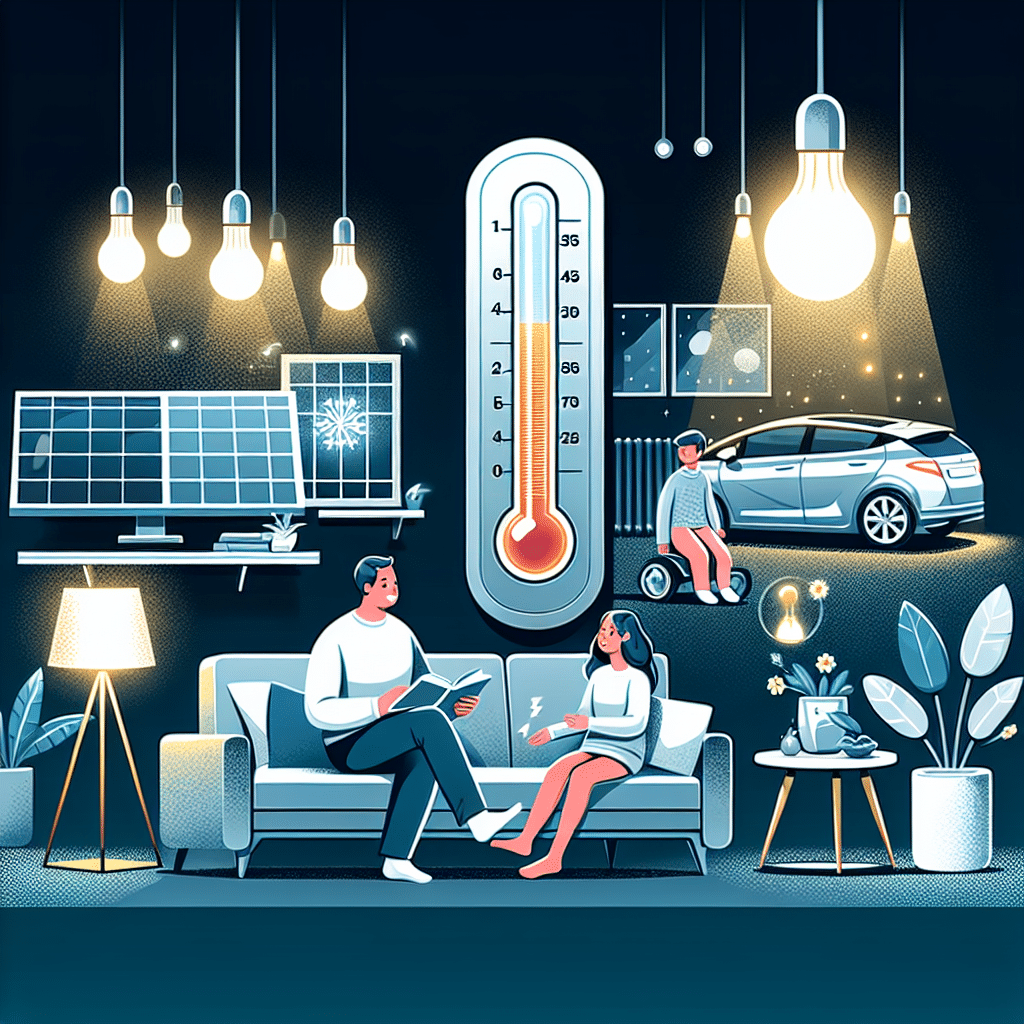Understanding Energy Consumption
Reducing energy consumption is essential in our fight against climate change, yet it’s equally important to maintain comfort in our homes. Implementing small changes can lead to significant energy savings without compromising the quality of our everyday lives. This article will explore practical strategies to efficiently reduce energy usage, enhance comfort, and promote sustainability.
1. Improve Home Insulation
A. Insulate Walls and Attics
Proper insulation keeps your home warm in winter and cool in summer. By insulating walls, attics, and floors, you can prevent heat exchange, significantly cutting down on energy usage.
B. Weatherstripping and Sealing
Check windows and doors for drafts and apply weatherstripping or caulking. This simple step can reduce heating and cooling expenses by up to 20% while ensuring a comfortable indoor climate.
2. Optimize Heating and Cooling Systems
A. Programmable Thermostats
Install a programmable thermostat to optimize heating and cooling schedules based on your daily routines. This technology ensures that your system doesn’t work harder than necessary when no one is home, equating to substantial energy savings.
B. Regular Maintenance
Schedule regular maintenance for heating and cooling systems to keep them operating at peak efficiency. Clean or replace filters monthly to prevent airflow restrictions and ensure your systems work optimally.
C. Zoning Systems
Consider a zoning system, which uses multiple thermostats to control temperatures in different areas of your home, allowing you to conserve energy in unused rooms.
3. Utilize Energy-Efficient Appliances
A. ENERGY STAR® Ratings
When replacing appliances, choose ENERGY STAR® rated products, which use significantly less energy and water than conventional models. Look for energy-efficient refrigerators, dishwashers, and washing machines that maintain performance without high energy bills.
B. Smart Power Strips
Use smart power strips for electronics; they automatically cut power to devices in standby mode, reducing phantom loads that contribute to energy waste.
4. Lighting Strategies
A. Switch to LED Bulbs
Replace incandescent bulbs with LED lighting. LEDs consume up to 75% less energy and last significantly longer, maintaining bright, comfortable lighting in your home.
B. Utilizing Daylight
Maximize natural light by keeping windows unobstructed and using light-colored curtains. This strategy reduces reliance on artificial lighting during the day, enhancing ambiance and reducing energy consumption.
5. Water Heating Efficiency
A. Lower Water Heater Temperature
Set your water heater to 120°F (49°C). This temperature provides comfortable hot water while reducing energy used in heating.
B. Insulate Your Water Heater
An insulated water heater blanket can minimize heat loss and improve efficiency, allowing your unit to use less energy to maintain warmth.
C. Fix Leaks Promptly
Address any leaks in faucets or appliances immediately, as even a small drip can waste gallons of water annually, leading to unnecessary energy costs linked to heating water.
6. Behavioral Adjustments
A. Smart Usage of Appliances
Operate dishwashers and washing machines only with full loads. This practice makes the best use of energy and water, ensuring maximum efficiency while maintaining cleanliness and hygiene.
B. Practice Mindful Energy Consumption
Encourage family members to turn off lights when leaving a room, unplug chargers, and limit unnecessary usage of cooling and heating systems.
7. Invest in Renewable Energy
A. Solar Panels
Consider installing solar panels to harness renewable energy. With advancements in technology and potential tax credits, solar power can drastically reduce your home’s energy dependence on fossil fuels.
B. Green Energy Plans
Contact your utility provider about options for green energy plans that allow you to source a percentage of your energy from renewable sources. This can be a straightforward way to contribute to sustainability while potentially lowering costs.
8. Smart Home Technology
A. Home Automation
Utilize smart home systems to control lighting, temperature, and appliances remotely or automatically. Smart sensors can optimize energy usage based on your habits, enhancing comfort while reducing costs.
B. Energy Monitoring
Invest in energy monitoring devices that track your consumption habits. Understanding energy usage patterns enables you to pinpoint areas for improvement, leading to more informed decisions.
9. Landscaping for Energy Efficiency
A. Shade Trees and Bushes
Planting trees and shrubs strategically can provide shade during summer months, reducing the need for air conditioning. Evergreens can act as windbreaks in winter, enhancing energy efficiency.
B. Green Roofs or Walls
Consider a green roof or vertical garden. These installations improve insulation, lower temperatures, and boost air quality, contributing positively to both comfort and sustainability.
10. Community Engagement
A. Learn and Share Knowledge
Participate in local energy efficiency workshops or community initiatives. Sharing experiences and tips can enhance awareness about conserving energy without compromising comfort.
B. Community Solar Programs
Explore opportunities to join community solar projects. These initiatives allow multiple households to benefit from shared solar energy production, facilitating a collective stride towards sustainability.
11. Evaluate Energy Consumption Regularly
A. Conduct Energy Audits
Perform regular energy audits to assess areas where improvements can be made. Audits can uncover inefficient practices and areas for potential upgrades in efficiency.
B. Continuous Assessment and Adaptation
Continually review consumption habits and comfort levels to identify further reductions or adjustments. Being informed and proactive ensures that your energy-saving efforts remain effective over time.
12. Maintain Comfort During Energy Reduction Efforts
A. Layered Clothing and Bedding
Adjusting clothing and bedding keeps you comfortable without relying solely on heating and cooling systems. Wear layers in winter and opt for breathable fabrics in summer.
B. Use of Fans
Ceiling or portable fans can be used to circulate air, making spaces feel cooler without lowering the thermostat. This helps maintain comfort while saving energy.
By adopting these strategies, you can significantly reduce your energy consumption without sacrificing your comfort. Each small change contributes to a larger impact on your budget and the environment, allowing you to live a sustainable lifestyle that prioritizes both comfort and efficiency.
